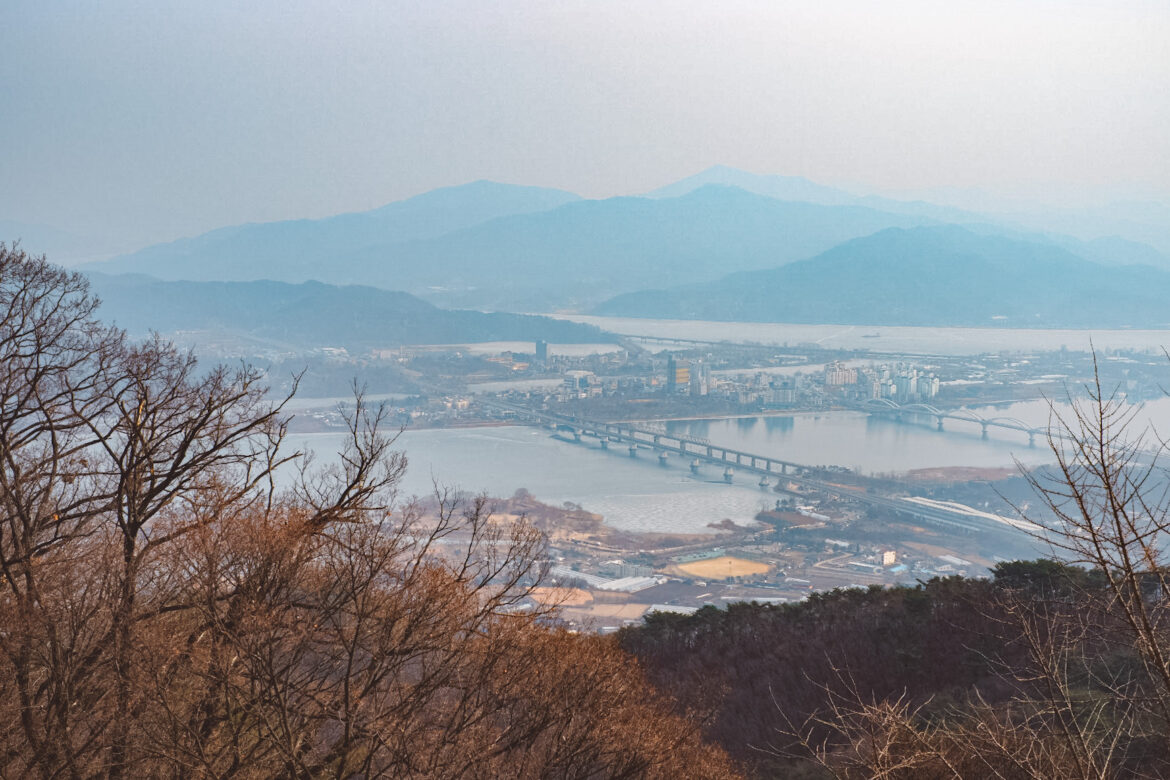When passing by a city, to be either en route to the planned destination or on the way back home, a short stop for a brief peek at the beauty that side-track has to offer can indubitably be a bonus of the trip. And at times, if you are coming from Seoul and planning on treating yourself with a hearty getaway in the East of Korea, you will see a pop of a specific area’s name that your choice navigation ops to cross over – Namyangju-si (남양주시), the kind of distraction you will be willing to stray into.
Like many other large cities in the country, Namyangju is home to plenty of temples that offer visitors a chance to experience the beauty of nature and the rich culture of the area. Amongst the glamor of the Buddhist establishments the city has, Sujongsa’s attractiveness seems to topple the others completely when it comes to the picture perfect spot with mind-boggling sceneries.
Located almost at the summit of Ungilsan Mountain (운길산), Sujongsa (수종사) or Sujong Temple (literally translated as Temple of Water Bells) overlooks the beautiful landscape including the confluence of the Bukhangang (북한강) and Namhangang (남한강) Rivers in Yangpyeong County’s Yangsuri. To get to the temple ground from the foot of the mountain, which rises approximately 610 meters above sea level, drivers are challenged to follow a relatively narrow, steep, mountainous road with numerous meanders to the parking space by the main entrance. And in order to conquer the higher ground where prayer halls, observatory pavilions and decks, shrines, and a large statue of seated Buddha are nestled, visitors need to hike on flights of stairs further uphill for around 15 minutes, tops. It is a bit of a venturing quest wherein the accomplisher will be awarded with loads of treats for the eyes.
Aside from the picturesque views and intricate traditional architecture, Sujongsa possesses a myth around its name and establishment that shall pique the anecdote buffs’ interest. It is believed that the construction of the temple was appointed by King Sejo, the second son of Sejong the Great and the seventh ruler of the Joseon dynasty of Korea. Legend has it that after visiting Geumgangsan Mountain (situated in today’s Gangwon Province) for treatment of a chronic illness (some articles stated differently – for royal sightseeing), Sejo spent the night in Isudu (present-day Yangsu-ri). During the stay, he was drawn into the place where the subtle sound of a bell wafted out from – a crypt. Inside, he discovered 18 Arhat statues and, instead of a ringing bell, dripping water seeping from the cracks of the subterranean vault – the source of the tantalizing sound. Accordingly, the king ordered the building of a temple enshrining the statues and named it Sujongsa, which means water bell temple.
In addition to being a worthy stopover for those who are traveling towards the east, Sujongsa is considered a spectacular destination for a day trip for Seoulites – it can take less than an hour to drive from the capital downtown. Whether you’re a history loving family, Korean architecture admirer, or simply looking to escape the hustle and bustle of everyday life, this temple offers something for everyone.
How to Get to Sujongsa from Seoul via Public Transportations
At Wangsimni Station, take the Seoul Subway Gyeogui Jungang Line that is bound to Yongmun (용문역). Alight at Ungilsan Station (운길산역), then grab a taxi cab to Sujongsa. From Ungilsan Station, it takes about 10 minutes and the fare should be around 5,000KW.
Address: 경기 남양주시 조안면 북한강로433번길 186 수종사
Naver Map: [link]
Did this entry help you? Or Did you enjoy my photos? Help support my small blog by giving a little cup of joe. I am always grateful when readers reach out wanting to support 🙂
Gallery: Visiting Sujongsa During Late Winter
p.s. This post is independently created. However, when you book or purchase something through the retail links, I may earn an affiliate commission to help keep Ploy’s Little Atlas running. Thank you very much for your support!
p.p.s All images used (unless specified) are owned by the author of the blog and permission is required for a repost. Please, reach out via social media channels to ask beforehand if you’d like to use them.
